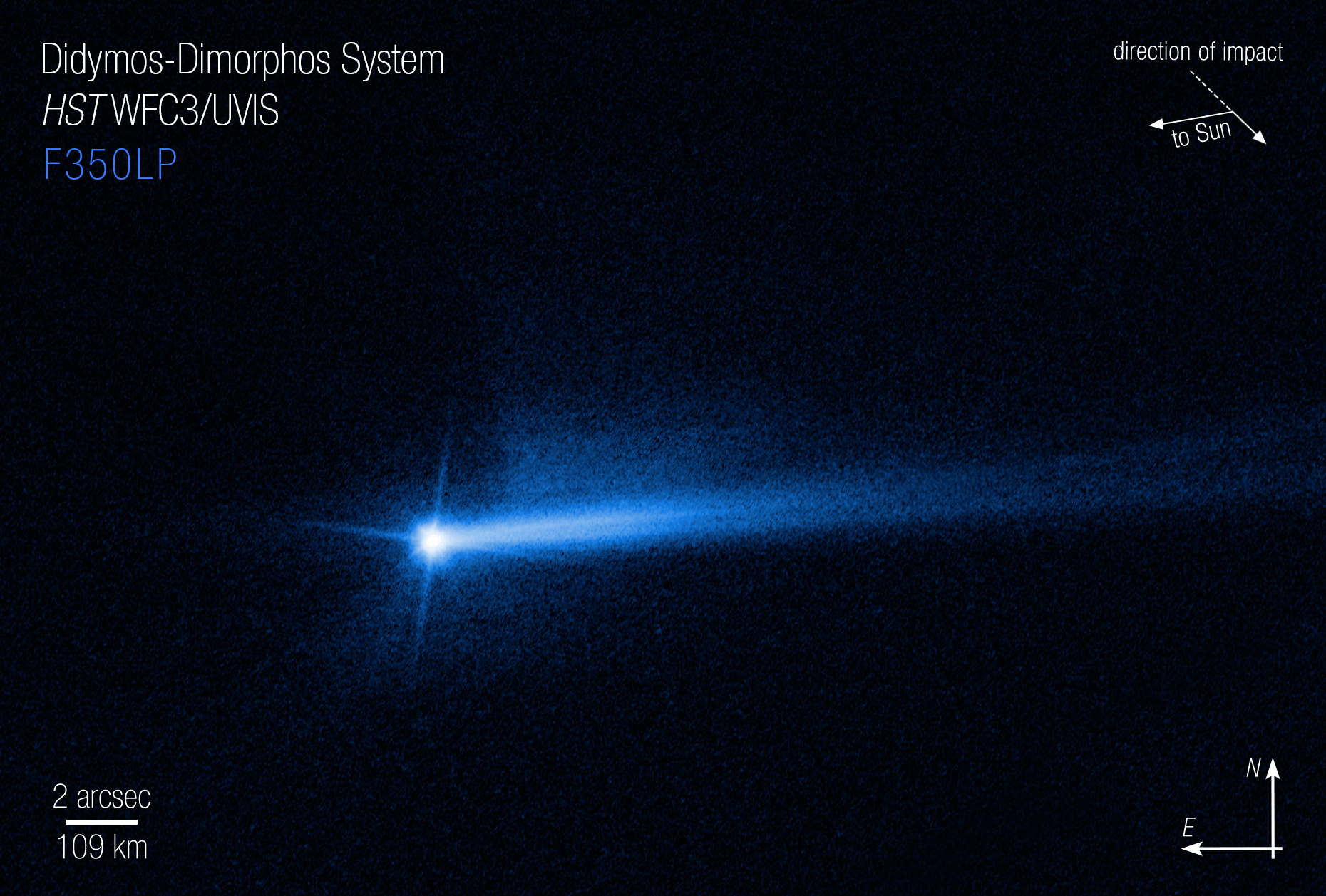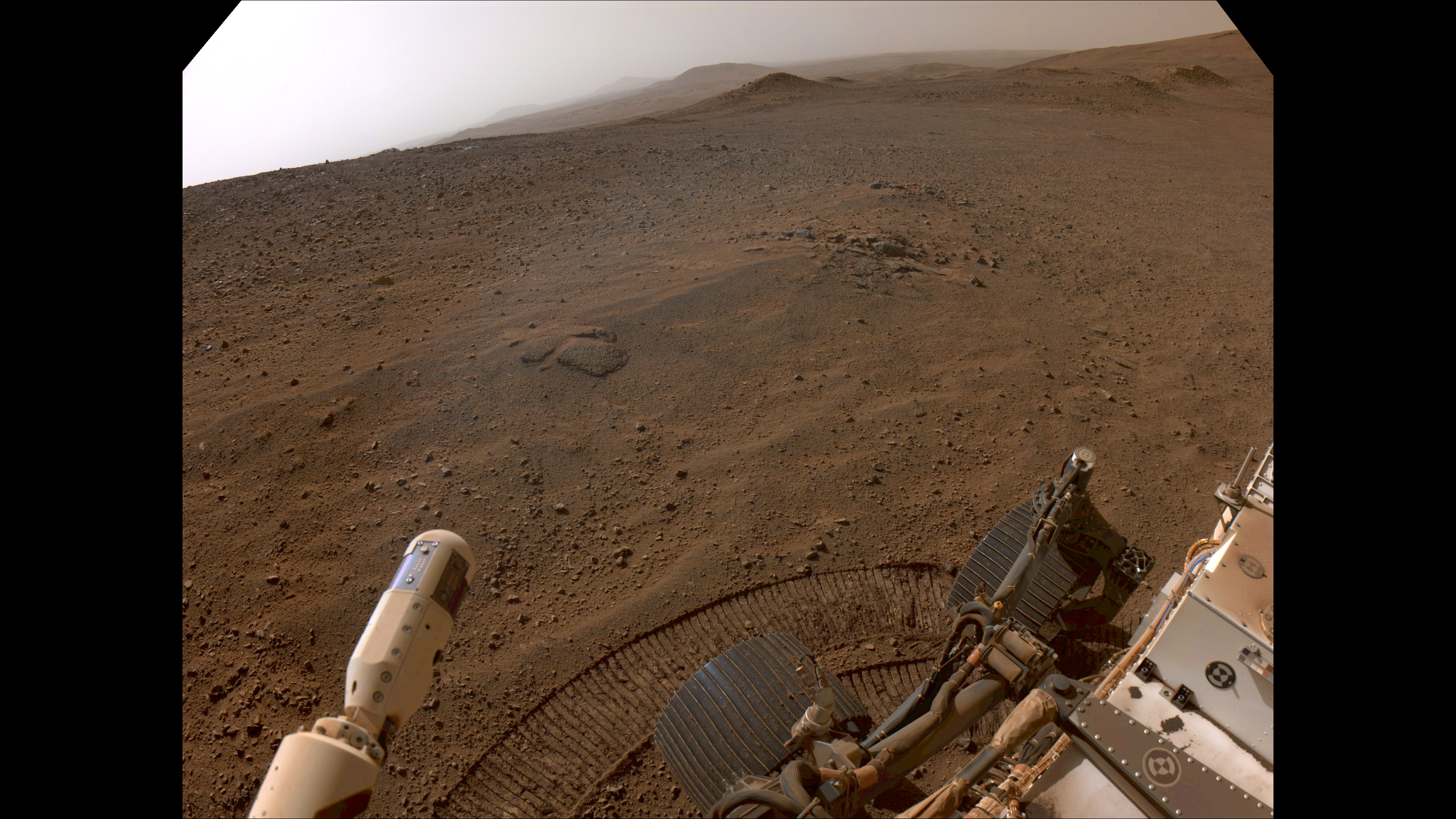2 min read
Two tails of dust ejected from the Didymos-Dimorphos asteroid system are seen in new images from NASA’s Hubble Space Telescope, documenting the lingering aftermath of NASA’s Double Asteroid Redirection Test (DART) impact.
The DART spacecraft impacted Dimorphos, a small moonlet of Didymos, on Sept. 26 in a planetary defense test to change Dimorphos’ orbit by crashing into it. Current data show that DART shortened Dimorphos’ original 11 hour and 55 minute orbit around Didymos by about 32 minutes.

Repeated observations from Hubble over the last several weeks have allowed scientists to present a more complete picture of how the system’s debris cloud has evolved over time. The observations show that the ejected material, or “ejecta,” has expanded and faded in brightness as time went on after impact, largely as expected. The twin tail is an unexpected development, although similar behavior is commonly seen in comets and active asteroids. The Hubble observations provide the best-quality image of the double-tail to date.
Related Stories
Following impact, Hubble made 18 observations of the system. Imagery indicates the second tail formed between Oct. 2 and Oct. 8.
In this image, DART impacted the Didymos-Dimorphos system from the 10 o’clock direction.
The relationship between the comet-like tail and other ejecta features seen at various times in images from Hubble and other telescopes is still unclear, and is something the Investigation Team is currently working to understand. The northern tail is newly developed. In the coming months, scientists will be taking a closer look at the data from Hubble to determine how the second tail developed. There are a number of possible scenarios the team will investigate.
The Hubble data were collected as part of Cycle 29 General Observers Program 16674.
The Hubble Space Telescope is a project of international cooperation between NASA and ESA. NASA's Goddard Space Flight Center in Greenbelt, Maryland, manages the telescope. The Space Telescope Science Institute (STScI) in Baltimore, Maryland, conducts Hubble and Webb science operations. STScI is operated for NASA by the Association of Universities for Research in Astronomy, in Washington, D.C.
Media Contacts:
Rob Garner
NASA's Goddard Space Flight Center, Greenbelt, MD
301-286-5687
Claire Andreoli
NASA's Goddard Space Flight Center, Greenbelt, MD
301-286-1940
Hannah Braun / Ray Villard
Space Telescope Science Institute, Baltimore, MD







